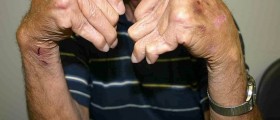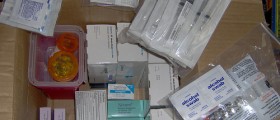Blood Plasma - Overview
Plasma donation is one of the ways to help people suffering from certain illnesses. It does not do any harm to a donor and is quite important for a recipient.
In a human body, blood cells are normally suspended in the yellow-colored component of the blood known as blood plasma. This substance accounts for 55% of the entire blood volume. Plasma contains approximately 90% of water, and the remnant 10% is made of a variety of substances such as dissolved proteins, glucose, clotting factors, mineral ions, hormones, etc. If fibrinogen and other blood clotting factors are removed from blood plasma, blood serum is obtained.

There are certain criteria when it comes to plasma donation. The requirements may only slightly differ from country to country, but in many countries, they are the same.
Plasma Donation Requirements
Plasma donation is done in certified blood plasma donation centers. During one session, a person can donate 0.8 liters of plasma.
Normally, there are certain restrictions, and not all people are allowed to donate their plasma. This rule applies to people who are at higher risk for HIV.
There are general requirements for plasma donation. Before donating plasma, the patient must fill out a medical history questionnaire as well as take tests for transmissible viruses.
Only people who are at least 18 years old are allowed to donate plasma. The person is also supposed to be at least 110 pounds in weight. It is allowed for a person to donate plasma twice a week, but the period between two donations must be at least 72 hours.
Allergic people, as well as those suffering from acute infections, are not suitable candidates. If one has undergone a blood transfusion, he/ she may donate plasma only after 12 months have passed. If one is taking antibiotics plasma donation may be approved depending on the type of antibiotic.
Women in general may donate blood plasma during menstrual bleeding but not during pregnancy. They are also allowed to donate plasma even if they are taking birth control pills.
Plasma donation is forbidden for people who are suffering from severe cases of acne on the very day of donation. If a person is suffering from arthritis, he/ she needs the approval of the physician since only in some cases of arthritis plasma donation may be allowed. A person suffering from asthma, diabetes, epilepsy, heart condition, etc, may be rejected from donating. Some plasma centers refuse to accept plasma from people with a family history of cancer. Intake of certain medications is taken into consideration as well.
Drinking alcohol on the day of donation is forbidden. Recent piercings or tattoos may prolong plasma donation for 4 to 12 months. Recent vaccination/ immunization, surgeries, and dental procedures also must be reported.
And finally, a person must report if he/ she has donated an organ, or tissue, has ever undergone transplantation, or has recently been to other countries.
- Studies of adverse events in blood donors have shown an increased rate of vasovagal reactions in younger donors; a study conducted in the United States of America in 2006 reported a 10.7% risk of a vasovagal reaction in donors aged 16–17 years, compared with 8.3% in 18–19 year-olds and 2.8% in donors aged 20 years or older. The age of 16 should therefore be an absolute lower limit for blood donation to ensure donor health and safety.
- Upper age limits for blood donation of between 60 and 70 years have been implemented in the past because of concerns regarding the increasing incidence of cardiovascular disease with age and the potential risk of adverse reactions, which are more likely in first-time donors.
- The prospective donor should appear generally well and should not be febrile, breathless or suffering from a persistent cough. Donors should be observed to rule out malnutrition or any debilitating condition. They should have a sound mental status and not be under the influence of alcohol or drugs. The colour of exposed skin and mucous membranes should be normal, with no jaundice, cyanosis, flushing or pallor, and no signs of skin infection, rash or obviously enlarged lymph nodes. If body piercings or tattoos are present, the risk of transfusion-transmissible infections (TTI) should be assessed.
- There is no evidence that minor infections such as common upper respiratory infections can be transmitted by transfusion, but it is nevertheless advisable as a precautionary measure to defer blood donation until any such infection has resolved.
- For apheresis procedures, the total volume of donated plasma, platelets and red cells collected should not exceed 13% of total blood volume and the maximum extracorporeal blood volume should not exceed 15% of the donor's total blood volume at any stage of the procedure. In practice, this requires that plateletpheresis and plasmapheresis donors should weigh at least 50 kg. Prospective donors of double red cell apheresis donations should have an estimated blood volume of more than 5 litres; this requirement is generally met by non-obese individuals weighing more than 70 kg.
- Haemoglobin screening safeguards anaemic individuals from donating blood and also protects returning donors from donation-induced iron deficiency (DIID), the depletion of iron stores by repeated donations. Collecting a unit of blood from a donor with a normal haemoglobin level also provides good quality blood components, with adequate and consistent haemoglobin content in the collected blood.
- Some occupations (e.g. health-care workers, police, military personnel, workers with animals) carry an increased risk of exposure to blood-borne infections, although confirmed transmission is relatively rare. While such individuals should have been immunized against relevant diseases, where possible, donors in these occupations should be questioned about possible exposure risk (e.g. needlestick injuries, blood splashes, bites) and a deferral period, usually of 6–12 months applied, based on the incubation period of the relevant infection.

















Your thoughts on this
Loading...